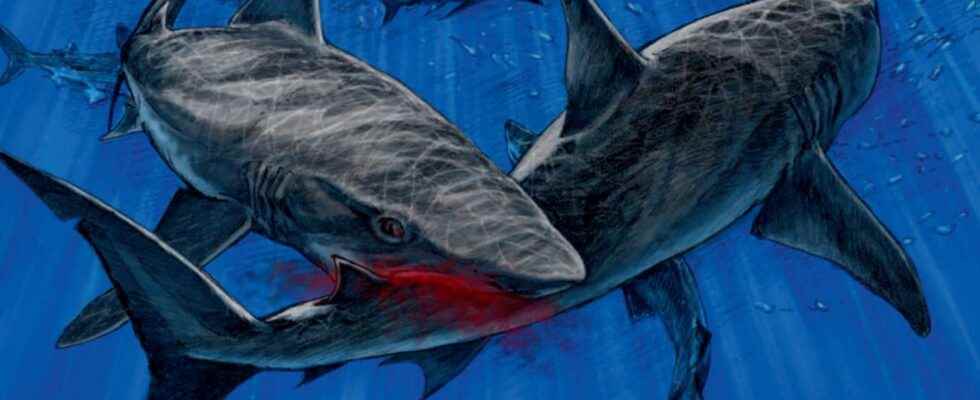The identity, as well as the ecology of extinct sharks, is mainly deduced from the shape of their teeth present in the fossil record. If traces of predation by these sharks have already been demonstrated in marine mammals, reptiles and cephalopods, it is exceptional that they are found on other sharks.
You will also be interested
[EN VIDÉO] An “eagle shark” swam in the seas of the Cretaceous The discovery made the “one” of the journal Science of March 19, 2021: 93 million years ago, strange winged sharks swam in the waters of the Gulf of Mexico. This unique fossil species, called Aquilolamna milarcae, allowed its discoverers to define a new family! © University of Rennes, CNRS
Predation between different cash of sharks is known in current specimens: for example, we can cite the fact that the common fruit bat can feed on its cousin, the little fruit bat, or that the bulldog shark is one of the predators of the sharp-nosed shark and the requiem shark dark. Intrauterine cannibalism has also been reported in great White shark and in the bull shark. These data in current species are mainly provided by the analysis of fresh stomach contents, which are therefore not available for shark species that have now disappeared. It is therefore difficult to know, thanks to the fossil record, if there were any predation relationships between sharks since the majority of extinct shark remains are composed of teeth and dermal denticles.
Intrauterine cannibalism has also been reported in great white sharks and bull sharks
The presence of shark teeth marks on the skeletons of other sharks attesting to active predation is therefore extremely rare. A study published in the newspaper Acta Palaeontologica Polonica reports the discovery of four vertebral elements of fossil carcharhiniforms at cliffs in Maryland as well as in North Carolina. These elements are centra, they constitute the major part of the vertebra and are dated 17.5 to 14 million years ago, i.e. in the Miocene. Of them teeth of carcharhiniforme are firmly established in one of these centers but marks of healing indicate that the shark has survived the attack.
On a second centrum, brands of bite indicate that several sharks attacked the vertebra or that several parts of the same jaw were used in the attack. Traces of shark teeth are also observed on the other two centra analyzes.
Active predation or scavenging?
The sharks fossils are mainly identified by their dental characteristics, by the general shape of the teeth as well as by the presence and spacing of crenulations on the crown of the teeth (the cutting part). In the study, the authors suggest that teeth planted in the centrum and the centrum itself belong to species of the genus Negaprion (the kind of lemon shark) or Carcharhinus (the kind of longimane shark).
A second centrum also belongs to a Carcharhinidae but the tooth marks could have been made by a shark or by a fish bony. The third centrum surely belongs to Galeocerdo aduncus (a cousin of tiger shark) and the markings resemble those made by a Carcharhinus. The last centrum probably belongs to Galeocerdo cuvier (a tiger shark) and the marks may have been made by Carcharodon hastalis (a giant mako shark). According to the authors, three of the four centra analyzed were present at the base of the caudal fin and the force of the bite suggests more active predatory behavior than scavenging.
Interested in what you just read?
.
fs11
